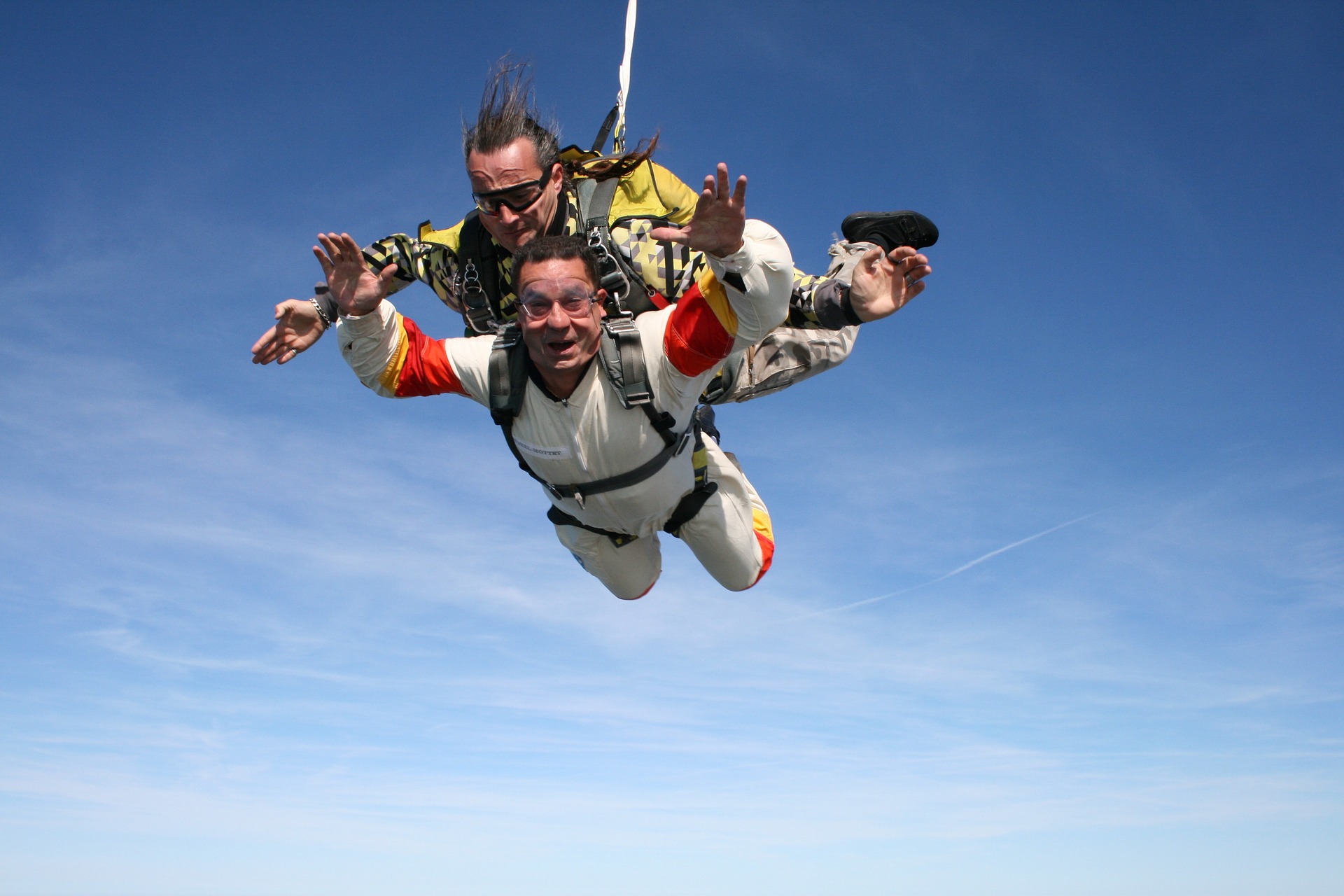Skydiving Tourism: The Ultimate Aerial Adventure
Soaring through the skies, feeling the rush of adrenaline, and witnessing breathtaking views from thousands of feet above the ground - welcome to the world of skydiving tourism. This thrilling niche in the travel industry combines the excitement of extreme sports with the allure of exploring new destinations. As more adventurers seek unique experiences, skydiving tourism has emerged as a captivating way to see the world from a whole new perspective, quite literally.

Today, skydiving centers around the world offer tandem jumps, allowing novices to experience the thrill of freefall with minimal training. This accessibility has opened up skydiving to a broader audience of travelers seeking unique experiences. From the picturesque dropzones of New Zealand to the desert landscapes of Dubai, skydiving tourism has become a way for destinations to differentiate themselves and attract adventure-seeking visitors.
The Psychology of Aerial Adventure Tourism
The appeal of skydiving tourism goes beyond the adrenaline rush. For many travelers, it represents a form of self-discovery and personal growth. Overcoming the fear of jumping from an aircraft can be a transformative experience, boosting confidence and providing a sense of accomplishment. This psychological aspect has made skydiving an attractive option for corporate team-building events and personal development retreats.
Moreover, the unique perspective gained from a skydive can change how travelers view a destination. Seeing landmarks, natural wonders, and landscapes from above offers a new appreciation for the geography and scale of a place. This aerial view often becomes a highlight of a trip, creating lasting memories that go beyond traditional sightseeing experiences.
Destination Skydiving: Combining Thrills with Travel
Skydiving tourism has given rise to the concept of destination skydiving, where travelers plan their trips around unique jumping locations. Some popular skydiving destinations have emerged as bucket-list experiences for adventure enthusiasts:
-
Interlaken, Switzerland: Offering breathtaking views of the Swiss Alps, lakes, and glaciers.
-
Fox Glacier, New Zealand: Providing a stunning backdrop of snow-capped mountains and lush forests.
-
Dubai, UAE: Famous for its Palm Jumeirah dropzone, offering a bird’s-eye view of the iconic palm-shaped island.
-
Hawaii, USA: Allowing jumpers to experience the tropical paradise from above, with views of beaches, volcanoes, and the Pacific Ocean.
These destinations combine the thrill of skydiving with spectacular scenery, creating a unique travel experience that appeals to both adrenaline junkies and those seeking unforgettable views.
The Impact on Local Economies and Tourism Infrastructure
The growth of skydiving tourism has had a significant impact on local economies in popular jumping destinations. Skydiving centers often become anchor attractions, drawing visitors who then engage with other local businesses such as hotels, restaurants, and tour operators. This influx of adventure tourists has led to the development of specialized tourism infrastructure in some areas, including themed accommodations and package deals that combine skydiving with other local activities.
Furthermore, skydiving events and competitions can attract large numbers of participants and spectators, providing a boost to seasonal tourism. Some destinations have successfully positioned themselves as skydiving hubs, hosting international events that put them on the map for extreme sports enthusiasts.
Safety Considerations and Regulatory Challenges
As with any extreme sport, safety is a paramount concern in skydiving tourism. The industry has made significant strides in improving safety standards, with rigorous training programs for instructors and strict equipment maintenance protocols. However, the rapid growth of skydiving tourism has presented regulatory challenges for some destinations, particularly in countries where aviation and extreme sports regulations are still evolving.
Balancing safety requirements with the desire to grow the tourism sector has led to ongoing discussions between skydiving operators, tourism boards, and regulatory bodies. Some countries have implemented specific regulations for skydiving tourism, addressing issues such as dropzone locations, aircraft safety, and instructor qualifications.
Skydiving Tourism: Insider Tips and Facts
-
Best time to jump: Early morning for clearer skies and calmer winds
-
Average freefall time: About 60 seconds from 14,000 feet
-
Temperature drop: Expect it to be about 30°F (17°C) colder at jump altitude
-
Common minimum age: 18 years old in most countries
-
Training required: Typically 20-30 minutes for a tandem jump
-
Photography options: Many dropzones offer video and photo packages
-
Booking advice: Reserve your jump in advance, especially during peak season
-
Health considerations: Check with your doctor if you have heart, back, or respiratory issues
Skydiving tourism represents a unique intersection of adventure, personal growth, and destination exploration. As travelers continue to seek out extraordinary experiences, this niche is likely to grow, offering new perspectives on familiar destinations and driving tourism to previously overlooked locations. Whether it’s conquering personal fears, witnessing breathtaking aerial views, or simply adding an unforgettable chapter to one’s travel story, skydiving tourism is redefining what it means to truly experience a destination.





